The national flag of Libya is a powerful emblem, reflecting the nation's complex and often tumultuous journey through different political eras, from monarchy to revolution and beyond. The current flag, reinstated on February 17, 2011, during the Libyan civil war, is a direct re-adoption of the flag originally used by the Kingdom of Libya from 1951 to 1969. This choice was deeply symbolic, aiming to break from the Gaddafi era and reconnect with a period of earlier national independence and unity. It embodies the aspirations for freedom, national unity, and the rich Islamic heritage of the Libyan people.
Design and Symbolism: A Resurgent Symbol of Monarchy, Revolution, and Faith
The flag of Libya is a horizontal tricolor, featuring three bands of red, black, and green, with a white star and crescent moon centrally placed on the wider black stripe. Each color and emblem carries significant historical and cultural weight:
-
Red (Top Stripe): The uppermost red stripe symbolizes the blood shed for Libya's liberation and the sacrifices made by its people in various struggles for independence and freedom. It evokes the valor and determination of those who fought against foreign occupation and oppressive regimes. In the context of the 2011 revolution, it specifically honored the martyrs who fell during the uprising against the Gaddafi regime. Historically, red was also a color used by various Libyan resistance movements.
-
Black (Middle, Wider Stripe): The central black stripe is the widest of the three and is the most prominent feature of the flag. This color represents the dark days of foreign occupation and oppression that Libya endured, particularly under Italian colonial rule. However, it also signifies the resolve and strength of the Libyan people to overcome adversity. Crucially, the black stripe is the primary field for the national emblems.
-
Green (Bottom Stripe): The lowermost green stripe symbolizes prosperity, hope, and the nation's agricultural wealth. It represents Libya's potential for growth, its fertile lands (especially in the coastal regions), and the aspirations for a brighter, more abundant future. Green is also universally recognized as a color associated with Islam, the predominant religion in Libya, highlighting the nation's strong Islamic identity and cultural values.
-
White Star and Crescent Moon (on Black Stripe): Centrally placed within the black stripe, the white five-pointed star and crescent moon are traditional and powerful symbols of Islam.
-
The crescent moon (Hilal) signifies the beginning of a new month in the Islamic calendar, representing progress and enlightenment. It also traditionally symbolizes the dawn of a new era.
-
The five-pointed star (Najma) represents the five pillars of Islam, the fundamental practices of the faith, and divine light. It also alludes to unity and guidance.
-
The placement of these white symbols on the black background creates a striking contrast, emphasizing the light of Islam and hope emerging from the darkness of oppression.
The arrangement and symbolism of these elements create a flag that is deeply rooted in Libya's history and its cultural and religious identity.
Dimensions and Proportions:
The official proportions of the Flag of Libya are a width-to-length ratio of 1:2. This is a common ratio for many national flags, contributing to its balanced appearance. The three horizontal stripes are not of equal width: the red stripe occupies 1/4 of the flag's height, the green stripe occupies 1/4, and the central black stripe occupies 1/2 of the flag's height, making it twice as wide as the other two. The star and crescent moon are proportionally sized to be prominent within the black stripe without overwhelming the overall design. This specific proportion, particularly the wider central stripe, is a key historical feature of this flag.
History and Evolution: A Reflection of Libya's Political Turmoil
The history of the Libyan flag is perhaps one of the most dynamic and politically charged of any national flag, directly mirroring the dramatic shifts in the country's governance.
-
Kingdom of Libya (1951-1969): The current flag was originally adopted on December 24, 1951, when Libya gained independence from British and French administration and became the United Kingdom of Libya under King Idris I. This flag was designed by Omar Faiek Shennib, a prominent Libyan statesman and diplomat. The design, with its red-black-green stripes and central star and crescent, was chosen to represent the three historical regions of Libya:
-
Red for Fezzan (or Tripolitania in some interpretations)
-
Black for Cyrenaica (the traditional seat of the Senussi monarchy)
-
Green for Tripolitania (or Fezzan in other interpretations)
-
The star and crescent were added as symbols of Islam. This flag symbolized the newly unified independent state.
-
Gaddafi Era (1969-2011): In 1969, Muammar Gaddafi overthrew the monarchy in a military coup. He immediately replaced the royal flag with the Pan-Arab colors: a horizontal red-white-black tricolor, similar to the flags of Egypt and Syria, reflecting Libya's alignment with Arab nationalism.
-
In 1971, Libya, Egypt, and Syria formed the Federation of Arab Republics, adopting a common flag that retained the red-white-black stripes with a golden hawk in the center.
-
However, the most radical change came in 1977. Following Egypt's peace initiative with Israel, Gaddafi, in a move of defiance, completely abandoned the Pan-Arab colors and adopted a solid plain green flag. This flag became unique in the world for being monochromatic, without any symbols, emblems, or words. Green, for Gaddafi, primarily symbolized the "Green Revolution" (his political philosophy detailed in The Green Book) and Islam. This plain green flag remained the national flag for 34 years, becoming synonymous with Gaddafi's autocratic rule.
-
2011 Civil War and Re-adoption: During the 2011 civil war, the anti-Gaddafi forces, particularly the National Transitional Council (NTC), widely adopted the original 1951 flag as a symbol of their rebellion and their desire to restore a sense of pre-Gaddafi national identity. This choice was a deliberate rejection of Gaddafi's green flag and what it represented. Following the fall of the Gaddafi regime, the 1951 flag was officially reinstated as the national flag of Libya on February 17, 2011, a date that is now celebrated as Libya's "Day of Rage" and the start of the revolution.
The current flag, therefore, represents a powerful return to the nation's foundational independence and a symbolic rejection of a long period of authoritarian rule.
Regional Context and North African Identity:
Libya is a country in the Maghreb region of North Africa, bordering the Mediterranean Sea to the north, Egypt to the east, Sudan to the southeast, Chad and Niger to the south, and Algeria and Tunisia to the west. Its flag, with its red, black, and green stripes and Islamic symbols, fits within the broader context of flags in the Arab world and North Africa, yet it also possesses unique characteristics.
The use of red, black, and green, along with the star and crescent, are common themes in many Arab and Islamic flags. However, Libya's specific historical arrangement, with the wider black stripe and the direct re-adoption of its monarchical flag, sets it apart. The flag stands in contrast to the Pan-Arab colors (red, white, black) that were popular during much of the 20th century among many Arab states. The re-adoption signifies a distinct path for Libya, emphasizing its specific history of unification and its break from the Pan-Arab nationalist movements that defined the Gaddafi era. It reinforces Libya's distinct identity, rooted in its unique regional historical narrative rather than a broader Pan-Arab ideology.
Interesting Facts:
-
The World's Only Monochromatic Flag (1977-2011): From 1977 to 2011, Libya's plain green flag was the only national flag in the world that consisted of a single color with no design, insignia, or other details. This made it historically unique.
-
Reinstated During Revolution: The current flag was brought back into use by anti-Gaddafi forces during the 2011 civil war before the fall of the regime, highlighting its role as a symbol of the revolution.
-
Symbol of Pre-Gaddafi Era: The flag is a direct revival of the flag of the Kingdom of Libya (1951-1969), symbolizing a return to the nation's roots before the 1969 coup.
-
Designed by a Diplomat: The original (and current) flag was designed by Omar Faiek Shennib, who was then Libya's Deputy Prime Minister.
-
Regional Representation: The original design represented the three historical regions of Libya: Tripolitania, Cyrenaica, and Fezzan, symbolizing their unification into one state.
-
Pan-Arab Colors vs. Unique Design: Gaddafi rejected the original flag for the Pan-Arab colors (red, white, black) and later adopted the unique plain green flag, highlighting a deliberate break from both the monarchical past and mainstream Arab nationalist symbols.
-
Feb 17 as a Symbolic Date: The date of the flag's official reinstatement, February 17, is commemorated as the start of the 2011 revolution.
-
Contrasting Symbolism: The black stripe, symbolizing the dark period, features the white symbols of Islam, representing light and hope emerging from adversity.
-
Symbol of Unity and Division: While intended to be a unifying symbol after the 2011 revolution, the flag's re-adoption has also, at times, become a point of contention in Libya's ongoing political fragmentation, with different factions sometimes favoring other symbols or interpretations.
Significance for the Inhabitants: A Banner of Freedom, Identity, and Unfinished Business
For the people of Libya, their national flag is an extraordinarily potent and emotionally charged symbol. Its recent re-adoption, following decades of a vastly different and highly politicized flag, imbues it with profound meaning. It is not merely a piece of fabric; it is a living testament to their tumultuous history, their enduring faith, and their ongoing struggle for stability and self-determination.
The red stripe, representing the blood of martyrs, is a raw and immediate reminder of the immense human cost of freedom. For those who lived through the 2011 revolution and its aftermath, it evokes vivid memories of sacrifice, courage, and the collective will to overthrow tyranny. This fosters a deep sense of national pride and a solemn remembrance of those who fell.
The black stripe, with its prominent white crescent and star, is particularly significant. It signifies the "dark days" of colonialism and, more recently, the protracted period of authoritarian rule under Gaddafi. Yet, within this darkness, the Islamic symbols shine brightly, representing the enduring light of faith, divine guidance, and the hope for a better future. For many Libyans, this imagery encapsulates their resilience – emerging from oppression guided by their spiritual beliefs.
The green stripe speaks to the aspiration for prosperity and a return to normalcy. It represents the potential for Libya's rich natural resources to benefit its people, fostering development and a return to peace and stability after years of conflict. It evokes hope for rebuilding, growth, and a flourishing society.
The flag's very existence, as a re-adoption of the 1951 monarchical flag, signifies a deliberate break from the past regime and a symbolic return to a period of earlier, unified independence. This resonates deeply with many who yearned for a reconnection with what they consider to be Libya's authentic national identity.
However, in a nation still grappling with political fragmentation and ongoing challenges, the flag also carries the weight of "unfinished business." While it is a unifying symbol for many, representing the aspirations of the 2011 revolution, its re-adoption is also a reminder of the complex and often difficult path Libya continues to navigate. It serves as a banner under which Libyans continue to strive for the full realization of the ideals of freedom, justice, and national unity that its colors and symbols so powerfully convey. It is a symbol of both hope and the ongoing struggle to achieve it.
In the demonstration images, full-size flags are shown with proportions of 2:3, and hand-held flags with proportions of 1:2.
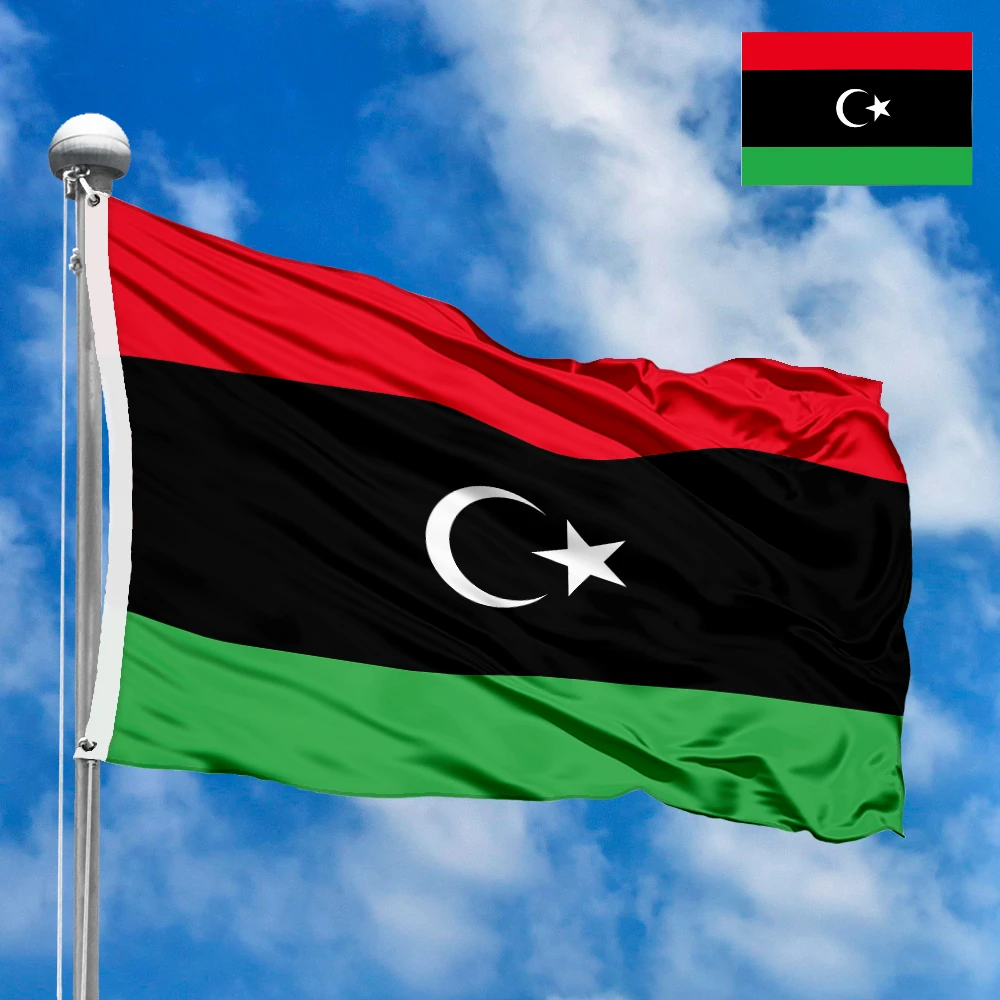

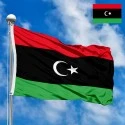
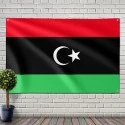
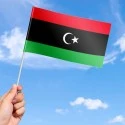

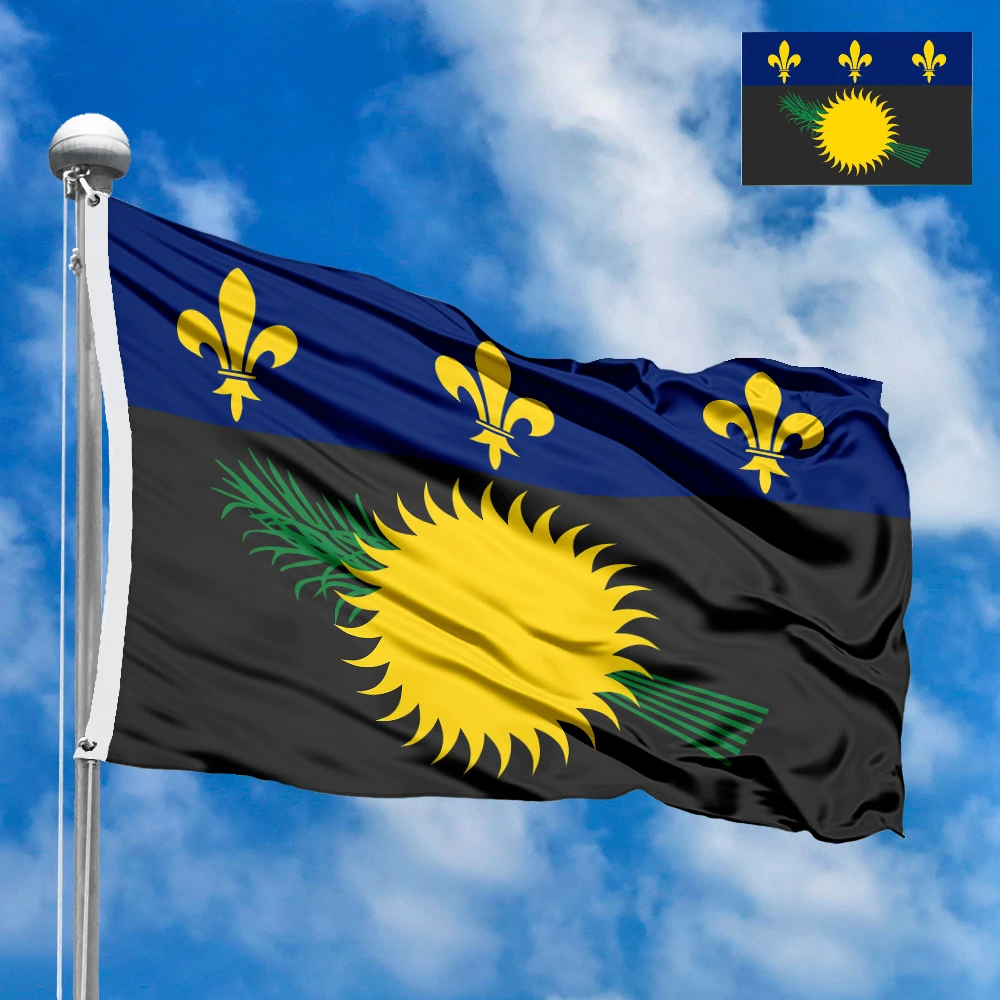
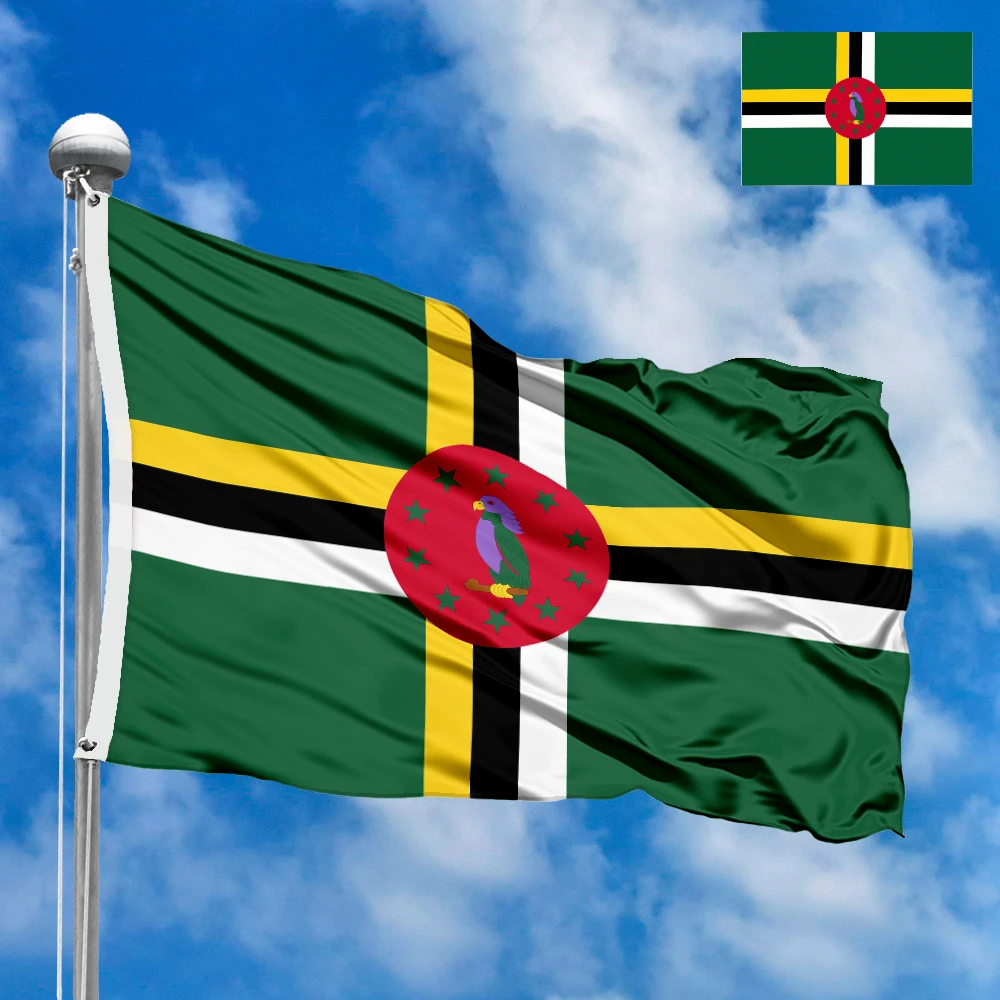

 Waving flag
Waving flag
 Sizes:
Sizes:
 Round flag
Round flag
 Sizes:
Sizes:
 Rectangular flag 2:3
Rectangular flag 2:3
 Sizes:
Sizes: